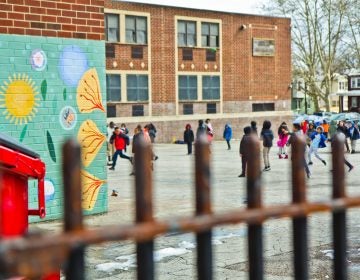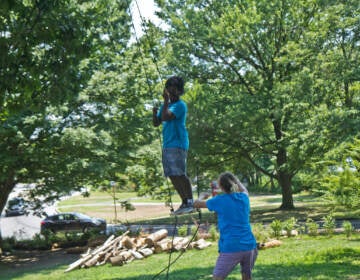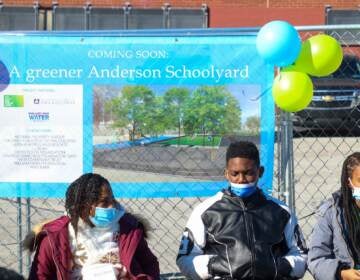Ben Franklin Elementary gets a playground — a first for a public school in the 19120 zip code
Two thirds of Philadelphia public schools don’t have playgrounds, and until now, there were none in the 19120 zip code.
Listen 2:11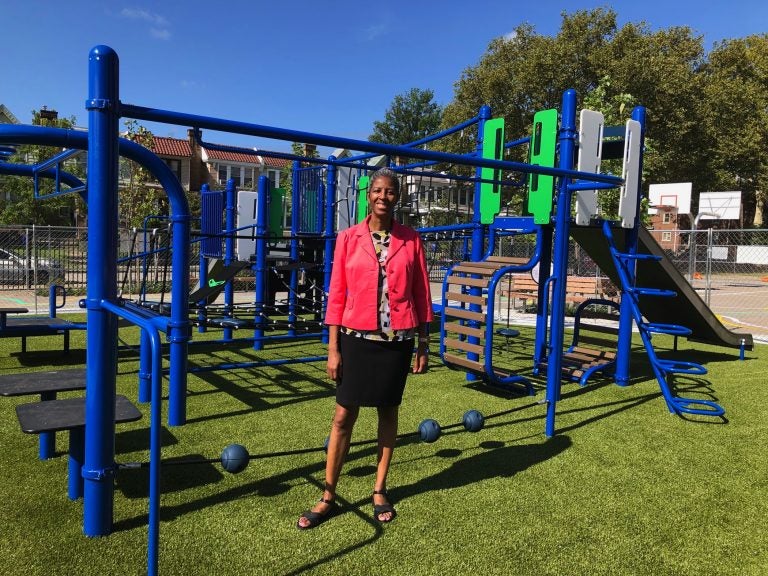
Roslynn Green has been principal at Ben Franklin for 15 years. Until now, the school yard has been entirely concrete. (Nina Feldman/WHYY)
After a long community design process and a lot of help from outside funders, the wait is finally over: the 800 students at Ben Franklin Elementary don’t have to play on concrete anymore.
The school partnered with the nonprofit Trust for Public Land, which works across the country to increase access to green space in cities. In recent years, the trust has started viewing schools as an opportunity to do that.
“We have these huge asphalt spaces that are doing very little good for a community,” said Owen Franklin, who runs the Trust’s regional office in Philadelphia. “With some investment can yield a whole new host of impacts that are serving not only the students from an educational standpoint, but the community as a gathering space.”
The trust saw a scarcity of greenspace in the Lawncrest neighborhood, and chose Ben Franklin as a priority.
Ben Franklin joins the ranks of what is unfortunately still a minority of Philadelphia public schools with a playground. A WHYY analysis found that two-thirds of Philadelphia public schools don’t have any kind of playground. The areas with the fewest tend to be in areas predominantly home to communities of color. Until now, the 19120 zip code which includes eight public schools in Olney and Lawncrest, had no public school playgrounds.
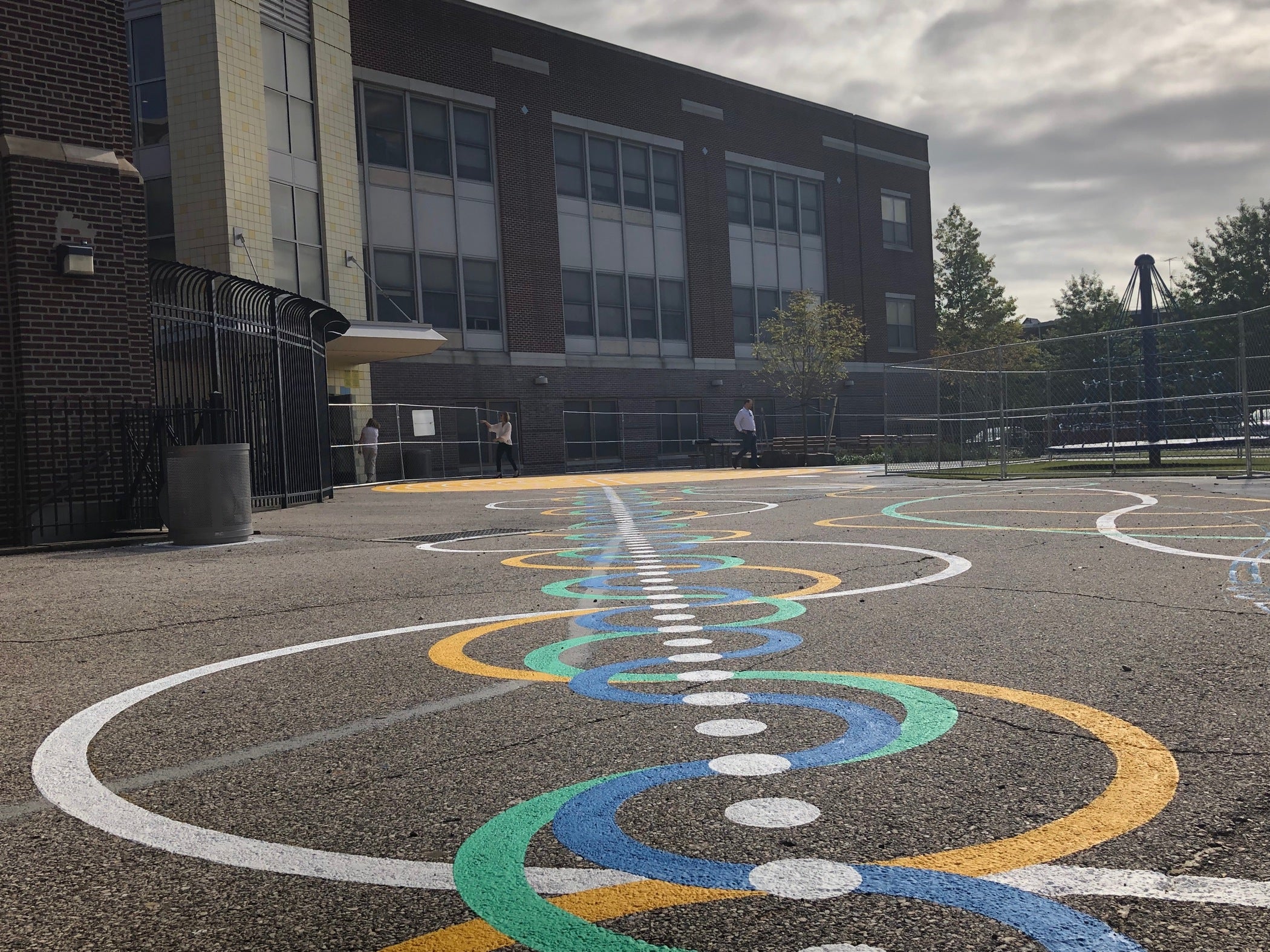
The new playground was designed by a classroom full of ten year olds with calculators.
Students in one fifth grade class were given a budget and the results of a schoolwide survey, where their classmates said what they wanted most for outdoor play. They ended up with a sprawling turf field for soccer and football, basketball courts, and a shiny new jungle gym with monkey bars, slides and a giant spinning structure that’s a cross between a merry-go-round and a ropes course.
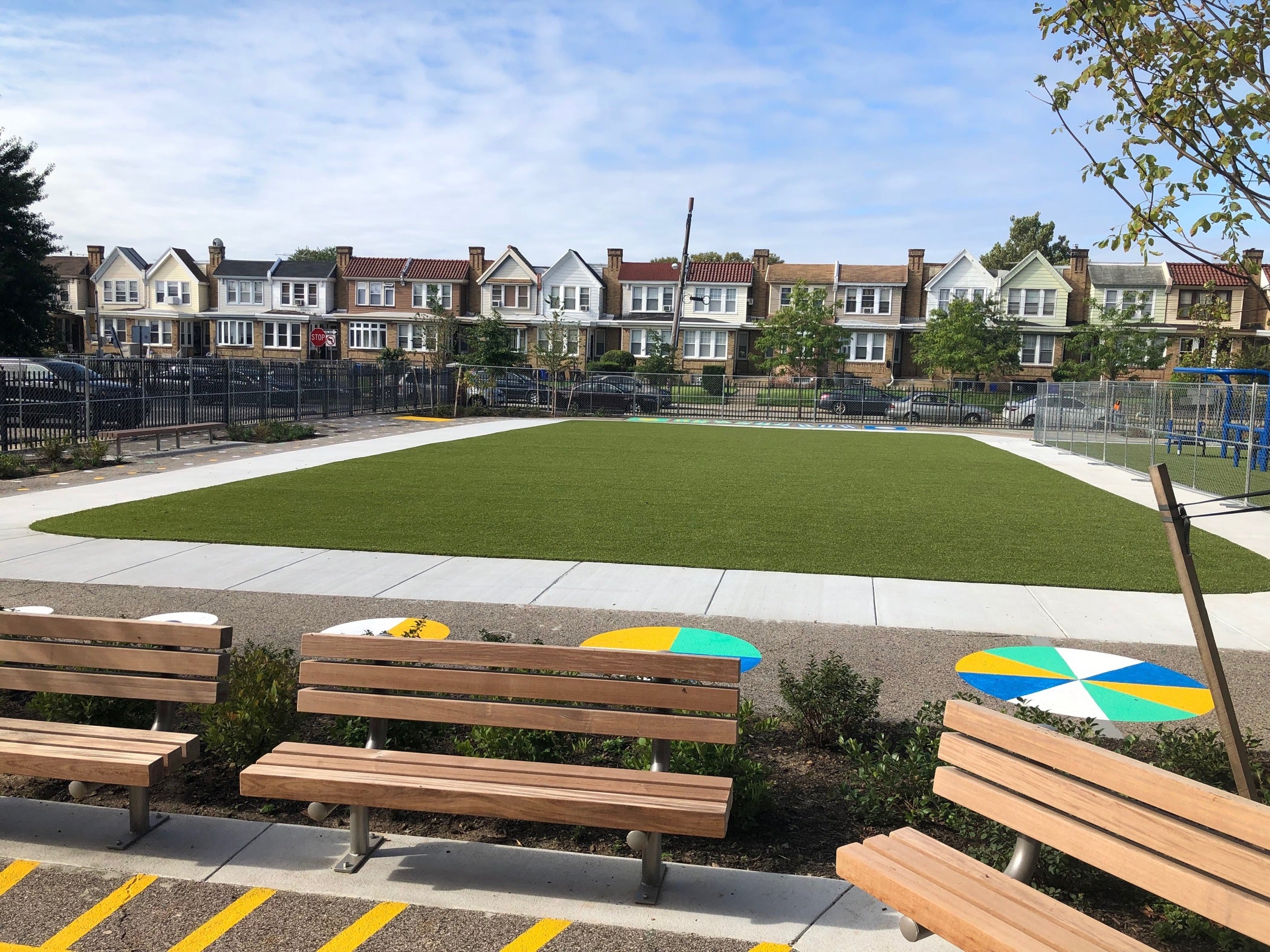
“I know they’re gonna be excited when they see the spinner,” said teacher Kimberly Andrews. Her fifth grade class led the design team. The Trust for Public Land helped usher Andrews’ class through the design process. They went on field trips to other schools, picked out which elements they liked (the spinner was a hit), figured out what they had space for and ordered equipment through the manufacturer’s catalogue.
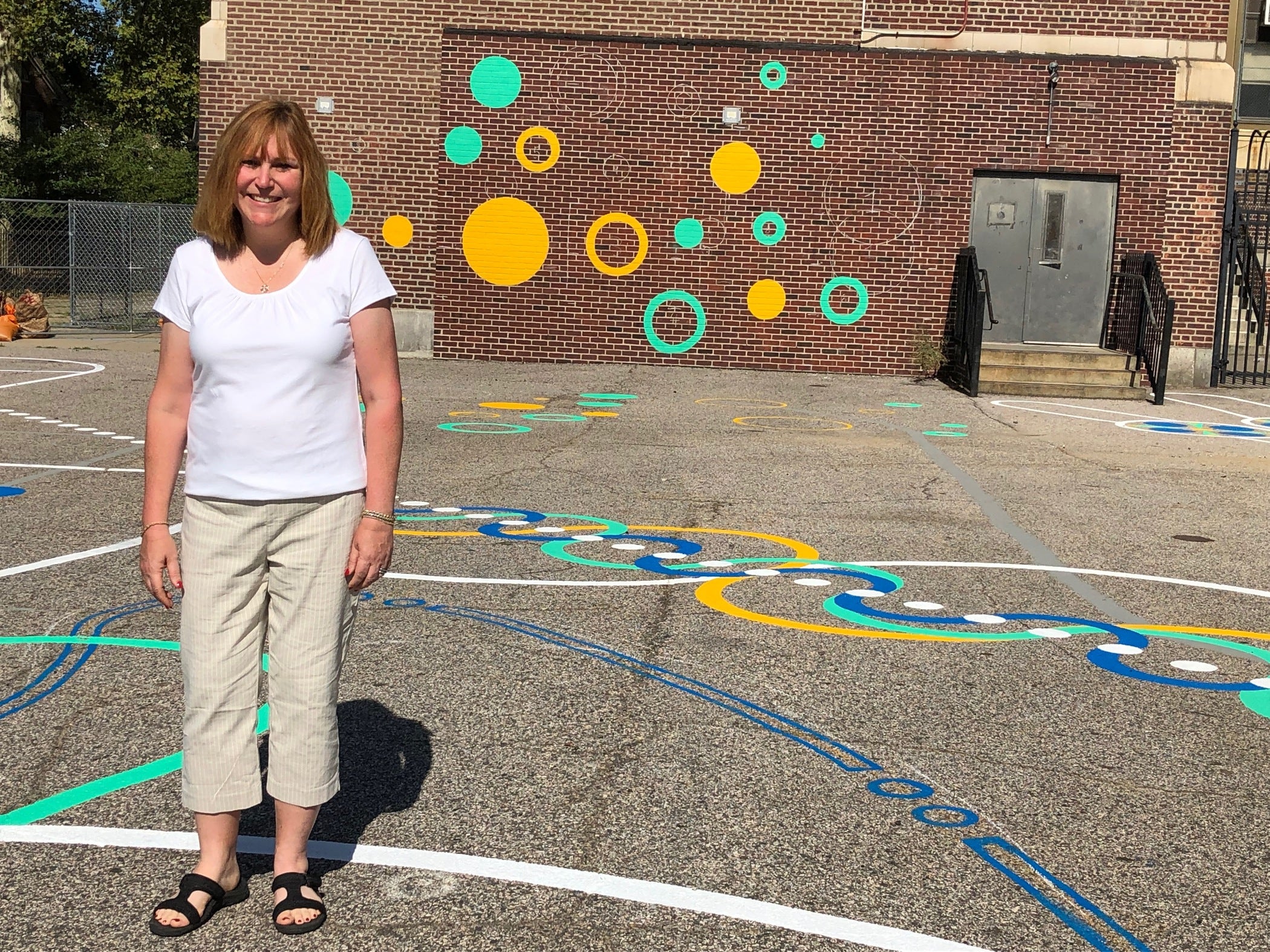
Andrews said she knew of one student who had her father drive her by the school each week during the summer to see how the construction was progressing.
“It gives them ownership of it and they will want to care for it even more because they were truly involved in it,” she said.
Until now, the school yard at Ben Franklin was entirely asphalt. The pavement that remains is painted with bright patterns, designed for outdoor education — ways to trick kids into learning when they think they’re just playing. For instance, the basketball court will have numbers painted around the free throw line to help kids calculate their shooting percentage.
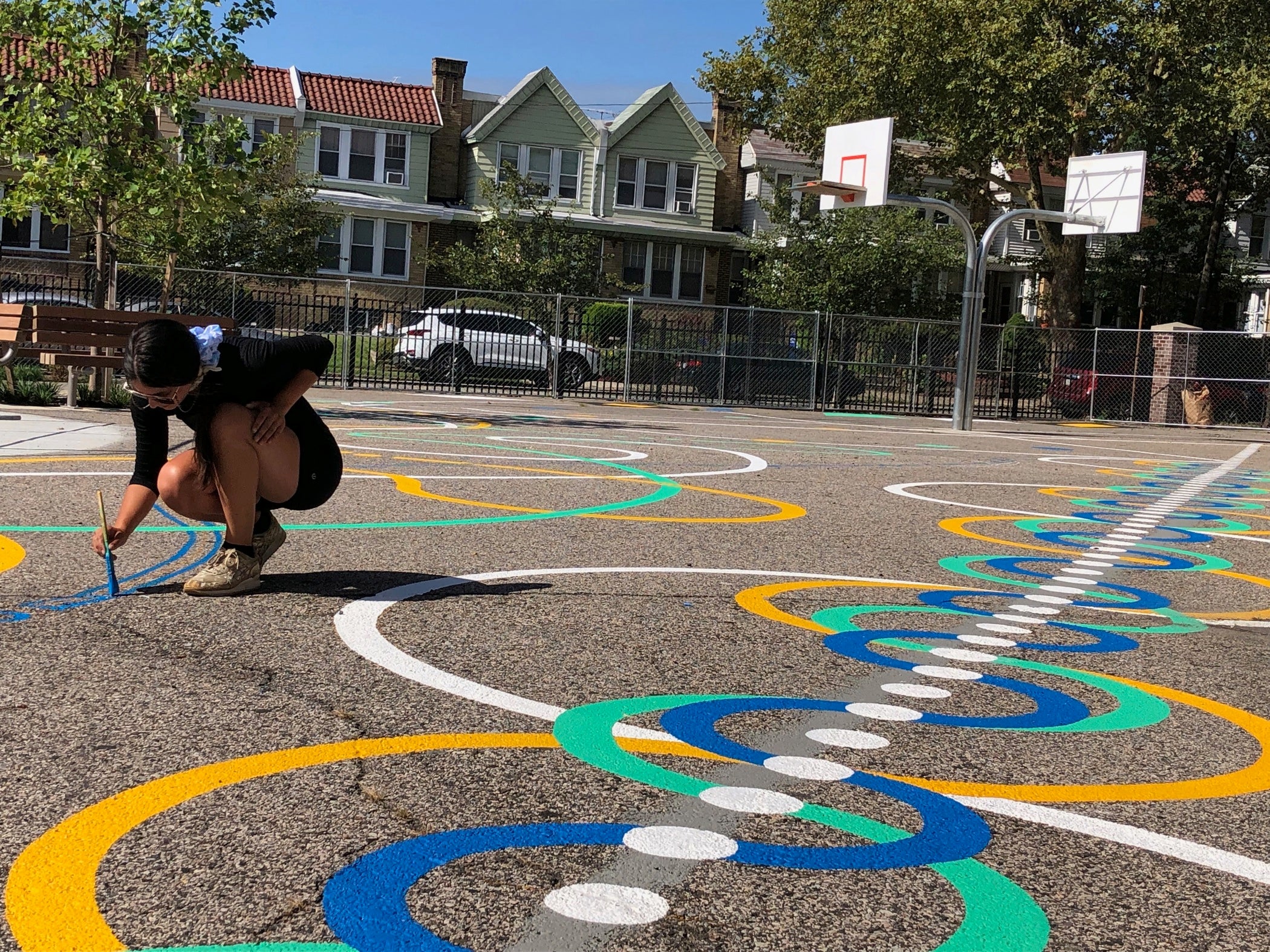
Principal Roslynn Green is excited for the ways that these creative approaches to learning can reach all her students and their families regardless of which language is spoken at home. She estimates there are 25 languages spoken at the school.
“The one language that everyone would know, within communities, families, children here, is math,” said Green, who has been principal at Franklin for 15 years. “It’s like an international language. So whoever uses this area, they’re able to interact and still have fun. That won’t be a barrier.”
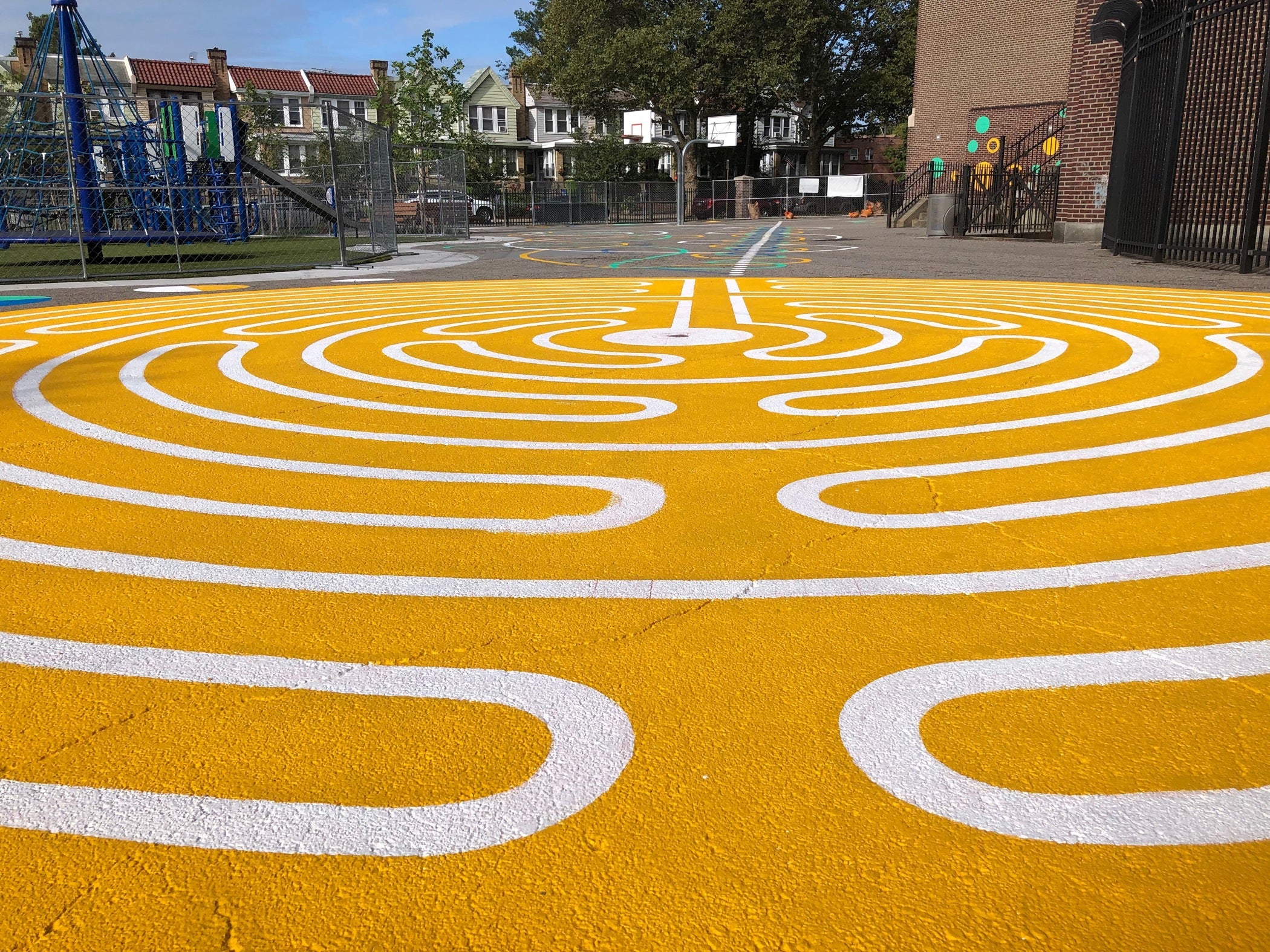
Ben Franklin’s new schoolyard will also be open to the public after school hours.
All told, this playground cost about $750,000 to design and build. The school district chipped in about a third of that, and the rest is from private philanthropies such as the William Penn Foundation through the Trust for Public Land. About two thirds of the total costs are for the actual capital improvements; the rest goes to the TPL for design costs, staff time, legal fees and other overhead. Owen Franklin of The Trust said it might sound expensive, but playgrounds like this should be the rule, not the exception.
“This is public infrastructure, this is not excess,” he said. “This is not a diamond slide and a chocolate fountain — this is a community playground. People should expect to have community playgrounds.”
The district has said it can’t fund playgrounds at this scale without help. The Trust for Public Land has built seven school yards in Philadelphia since 2012, with five more in the works. About 60 schools request new playgrounds each year.
Disclosure: The William Penn Foundation supports WHYY.
WHYY is your source for fact-based, in-depth journalism and information. As a nonprofit organization, we rely on financial support from readers like you. Please give today.



